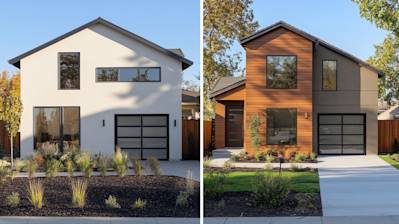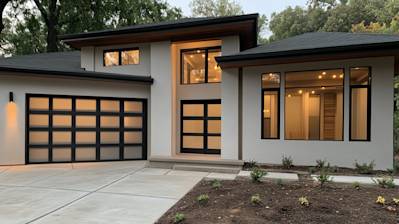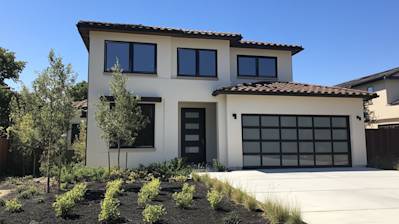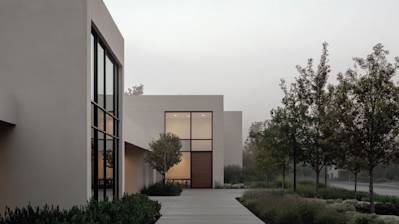When it comes to building and construction materials, drywall or gypsum plaster is the most common material utilized in interior construction all over the world. From commercial buildings to residential homes, people prefer gypsum plaster for its consistency, smooth finish, and easy application. This blog is designed to illuminate on all the necessary information about gypsum plaster, its manufacturing process, types, applications, benefits, and importance in the construction world.
Gypsum Plaster - An Overview
Commonly referred to as Plaster of Paris, gypsum plaster is a building material used for coating walls and ceilings. It's manufactured from gypsum, a mineral of crystalline structure that, when heated and ground, becomes a powder. When mixed with water, the resulting substance is malleable at first, but hardens within a few hours.
Manufacturing Process of Gypsum Plaster
The manufacturing process of gypsum plaster involves several steps. It starts with mining gypsum stone and then crushing the rock to powder. The powder is further heated to remove any moisture content. By mixing this powder with water, the gypsum paste or plaster is formed. After it hardens, it is ready for application on the surface of walls and ceilings.
Application of Gypsum Plaster
-
Walls and Ceiling Plaster: Gypsum plaster provides a smooth interior finish for ceilings and walls, and is ideal for decorating and making intricate design. It's often applied over concrete walls and ceilings.
-
Decorative Plaster: Due to its molding capabilities, gypsum plaster is also used for creating architectural designs for interiors and ceilings.
-
Fire Resistance: Gypsum plaster boards are specially designed to provide fire-resistant surfaces. It's widely used in public buildings, schools, hospitals and commercial spaces for fire safety.
Types of Gypsum Plaster
Gypsum plaster comes in several types, each designed for a particular kind of application. Here are the most common types:
-
Gypsum Board: This is the most common type used in building interiors. It is also referred to as drywall, plasterboard, or wallboard.
-
Veneer Plaster: This type of gypsum plaster is used as a top layer on an another material, providing a smooth finish and decorative appearance.
-
Plaster Blocks: These are blocks made of gypsum plaster and used for building walls. They’re often used for constructing quick-to-build interior walls.
The Importance of Gypsum Plaster in Construction
Gypsum plaster plays a significant role in the construction industry. Its inherent characteristics make it vital for modern construction. Below are some reasons why gypsum plaster is favoured:
-
Easy to Apply: Gypsum plaster can be easily applied to surfaces, allowing for a smooth and even finish. It also does not require any curing time.
-
Mold and Fire Resistant: Gypsum plaster is naturally resistant to fire and molds, making it a safe choice for building materials.
-
Aesthetic Appeal: Its mould-ability allows for beautiful architectural and decorative designs which contribute to the aesthetic value of any building.
Gypsum Plaster in the Future of Construction
The future of construction will continue to harness the potential of gypsum plaster. As sustainable and green building materials become the norm, gypsum plaster's biodegradable nature makes it a preferred choice among eco-friendly construction practices. In addition, the continuous innovation in gypsum techniques and plastering technologies further emphasizes its indispensability in the construction industry.
Gypsum plaster is not just a typical construction material. It is a vital component that lends aesthetics, resilience, and endurance to structures across the globe.
Frequently Asked Questions about Gypsum Plaster
How is gypsum plaster made?
Gypsum plaster is made by heating gypsum rock to remove the water content and create calcium sulphate. This substance is then ground into a fine powder, which can be mixed with water to create plaster.
What are the main applications of gypsum plaster?
Gypsum plaster is used in a variety of settings, including the construction of walls and ceilings, artwork, in medical and dental applications, and even in agriculture. It's a versatile material with a smooth finish, which makes it ideal for interior surfaces.
Can gypsum plaster be used outdoors?
While gypsum plaster is durable and resistant to heat and sound, it's not waterproof. Therefore, it's typically not the best choice for outdoor applications unless it's thoroughly sealed against moisture.
How long does gypsum plaster take to dry?
The drying time for gypsum plaster can vary depending on factors such as humidity levels and the thickness of the plaster application. However, it generally takes about 2-3 days for gypsum plaster to dry fully.
Does gypsum plaster need to be painted?
While it's not necessary to paint gypsum plaster, many people choose to do so in order to achieve a desired color or finish. If you choose to paint your gypsum plaster, ensure it's completely dry before beginning.
How to mix gypsum plaster?
To mix gypsum plaster, you'll need to combine the dry plaster powder with clean, cool water. The general rule of thumb is to use two parts plaster to one part water. Mix the plaster until it reaches a smooth consistency, being careful to avoid creating lumps.
What is the shelf life of gypsum plaster?
The shelf life of gypsum plaster is generally about one year if stored correctly. It should be kept in a cool, dry place where it won't be exposed to moisture.
How to repair damaged gypsum plaster?
To repair damaged gypsum plaster, clean the damaged area and apply a new layer of plaster. Lightly sand the repaired area to ensure a smooth finish before painting or finishing.
What is the difference between gypsum plaster and cement plaster?
The main difference between gypsum plaster and cement plaster lies in their ingredients and their drying times. Gypsum plaster is made of gypsum and is quick-drying, whereas cement plaster is made of cement and sand and takes longer to dry. Also, gypsum plaster is typically smoother and easier to mold than cement plaster.
How does gypsum plaster react to fire?
Gypsum plaster is naturally fire-resistant because when heated, it releases water vapor which helps to suppress flames. However, prolonged exposure to extreme heat can reduce its structure and cause it to crumble.
Can gypsum plaster be recycled?
Yes, gypsum plaster can be recycled. In fact, much of the gypsum plaster used today is made from recycled materials. Old plasterboard and waste from construction sites can be processed and turned into new gypsum plaster.
The Pros and Cons of Gypsum Plaster
Pros of Gypsum Plaster
Ease of Application
One significant advantage of gypsum plaster is its ease of application. It is much easier to apply compared to cement plaster and does not require curing, which saves both time and effort. This ease of application has made gypsum plaster a preferred choice for many professional builders and DIY enthusiasts.
Smooth Finish
- Another advantage of gypsum plastering is that it allows for a smooth, flawless finish. This is almost impossible to achieve with cement plaster.
- It provides an appealing aesthetic finish that can easily be decorated or painted.
Sound Insulation
- Gypsum plaster significantly reduces the transmission of sound and hence provides good sound insulation.
- It's an excellent choice for buildings and homes located in noise-prone areas.
Durability
Despite its lightweight properties, gypsum plaster is incredibly durable. It is resistant to shrinking, cracking and warping. As a result, it remains stable over time.
Fire Resistance
- The high water content in gypsum plaster makes it naturally fire-resistant.
- It can resist fire for an extended period, safeguarding life and properties in case of a fire outbreak.
Cons of Gypsum Plaster
Water Sensitivity
- While gypsum plaster offers many benefits, it does have some drawbacks - chief among which is its sensitivity to water.
- Direct contact with water can cause gypsum plaster to deteriorate, compromising the wall construction and aesthetic finish.
Cost
- The cost of gypsum plaster is usually higher than that of traditional plastering methods.
- It may also require the application by trained professionals, increasing the overall cost.
Lack of Flexibility
Gypsum plaster is rigid and not particularly flexible; thus, it doesn’t cope well with building movements. In such cases, cracks may develop over time.
Limited Outdoor Use
The water sensitivity of gypsum plaster greatly limits its applications outdoors. Exposure to rain, snow, or high humidity can cause significant damage to gypsum plaster, meaning it's generally unsuitable for outdoor use.
Potential Health Risks
- Gypsum plaster dust can be harmful if inhaled in large quantities, and constant exposure may lead to health problems.
- It's important to use a dust mask and safety goggles when applying gypsum plaster indoors.
When considering gypsum plaster, it's important to weigh the pros against the cons. This helps in making an informed decision about whether it is the most suitable plastering material for your specific needs.
Summary
Gypsum plaster is certainly a noteworthy material for various reasons. Its uses are widespread, whether that's in construction where it comes in handy for ceilings and walls, or in arts where it serves as a fine base for sculptures. The ease of application, quick setting time, and fire-resistant properties clearly make this versatile material stand out.
Additionally, the environmental benefits of using gypsum plaster cannot be overlooked. It does not emit any harmful substances and can be easily recycled, making it a sustainable choice. The fact that it's breathable and regulates humidity indoors is a bonus that directly benefits human health, proving this material isn't just good for our planet but for us as well.
Don't underestimate the value of gypsum plaster. Despite being a seemingly ordinary material, it plays a crucial part in the functioning and aesthetics of our built environment. Clearly, the unique characteristics of gypsum plaster make it indispensable in our world today.
About Atlas Stucco
Welcome to Atlas Stucco, your premier stucco service provider in Sacramento, CA! We boast decades of experience in the industry, and are committed to delivering high-quality craftsmanship paired with top-notch customer service. Our team of professionals specializes in a variety of stucco-related services, ranging from fresh installations to repairs of all sizes. With Atlas Stucco, you can be assured that your project will be handled with attention to every detail, making sure that you are satisfied with the results from start to finish.
Tags: gypsum plaster, plastering, construction,








